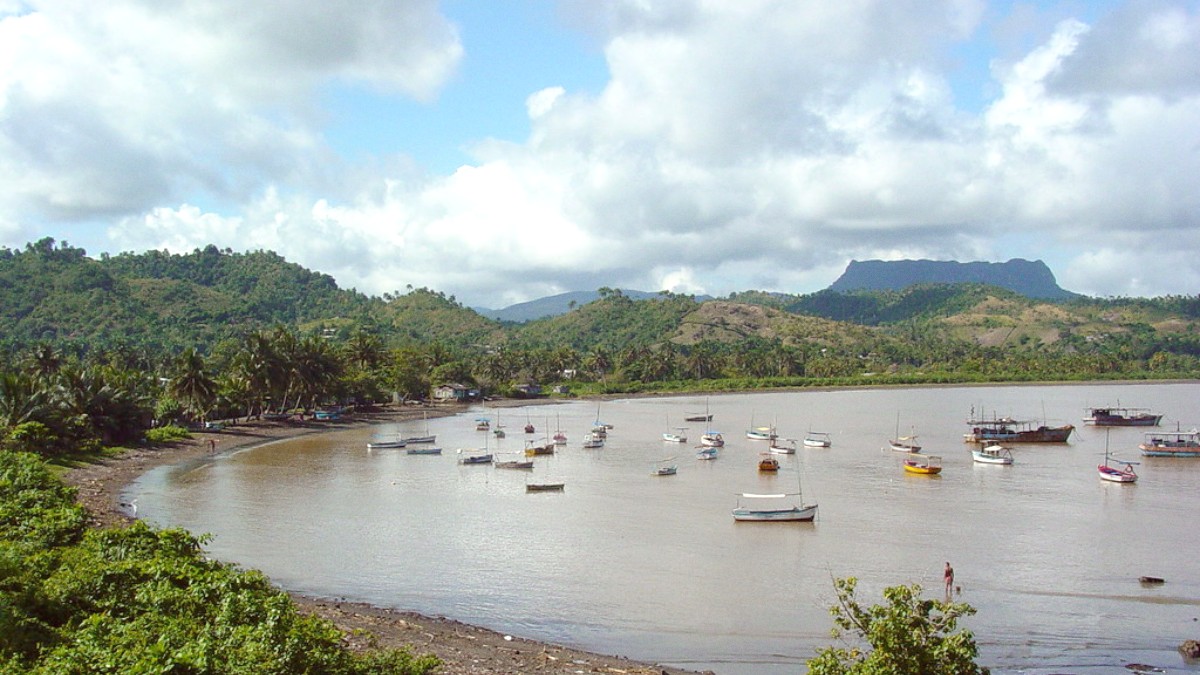
Eastern Cuba, Cuba
Baracoa is Cuba's oldest city, founded by Diego Velázquez de Cuéllar in 1511. It served as the first capital of Cuba. Its isolated location, surrounded by mountains and the Atlantic Ocean, helped preserve its unique culture and charm, distinct from other parts of the island.
For tickets and tours, consider booking in advance via GetYourGuide.
Cuevas del Paraíso contain significant pre-Columbian Taino burial sites and archaeological findings.
Baracoa's colonial center includes charming, narrow streets and colorful houses with traditional architecture. Many Casas Particulares reside in these historic buildings.
Catedral Nuestra Señora de la Asunción is a central religious site, historically significant due to the Cruz de la Parra, remaining an active place of worship.
Monuments to historical figures involved in Cuba's independence movements appear throughout the city's squares, serving as reminders of national struggles.
The various forts—El Castillo Seboruco, Fuerte Matachín, and La Punta Fortress—are remnants of Baracoa's military past, built to protect the strategic port.
Baracoa's natural beauty rivals its historical depth.
A UNESCO World Heritage Site east of Baracoa. Noted for incredible biodiversity, high numbers of endemic species, and pristine rainforest ecosystems. A world-class natural wonder for birdwatching.
Closer to Baracoa, this natural park features hiking trails, caves (including Cueva del Agua), and beautiful coastal landscapes. It presents a more accessible option for experiencing nature near the city.
An iconic flat-topped mountain, a symbol of Baracoa. Hiking to its summit presents spectacular panoramic views of the region, including the city, bay, and rainforest. A local guide is necessary for this hike.
This winding mountain road, an impressive feat of engineering, offers panoramic views, especially when approaching Baracoa from Guantánamo. It is a journey itself, showing the region's rugged beauty.
Alejandro de Humboldt National Park is a prime birdwatching location, home to many endemic species. Guided tours aid in spotting rare birds and identifying local flora and fauna. Boat trips on the Toa River also present local birdlife.
Playa Maguana, a beautiful white sand beach north of Baracoa, is popular for swimming and sunbathing. Rio Toa, one of Cuba's largest rivers, is known for lush surroundings and scenic boat trips. Rio Yumurí is known for its impressive canyon, accessible by boat.
Finca Duaba, a working cocoa farm, offers tours on cocoa production and fresh product tastings. Museo Arqueológico La Cueva del Paraíso, though in guidebooks, receives fewer visitors, giving insights into pre-Columbian history.
Ask your Casa host or a local guide for directions to popular swimming holes along the rivers, often known only to residents. Simply wandering off the main tourist avenues into residential streets unveils everyday Cuban life and charming local scenes.
Capture El Yunque silhouetted against the morning sky from the Malecón. The winding La Farola road presents dramatic photographic opportunities from designated viewpoints. Document the cocoa production process and lush greenery at a cocoa farm.
To fully appreciate Baracoa's attractions, planning ahead for transportation and guided excursions is advisable, especially for natural parks.
Beyond its natural and historical sites, Baracoa's charm lies in its local culture. Engage with the people and traditions that define this unique Cuban city.
From its music to daily life, Baracoa invites a cultural dive. Witness local customs and the warmth of its inhabitants.
Baracoa’s unique cultural traditions reflect its history and isolation. Its local music and dance forms are especially noteworthy.
Observing daily life in Baracoa can be as enriching as visiting its landmarks. Interact with locals to gain a appreciation.
While not always widely advertised, local events and festivals present fantastic opportunities for cultural immersion.
Baracoa presents unique souvenir opportunities, reflecting its local crafts and agricultural bounty.
Arm yourself with practical knowledge for a smoother Baracoa experience.
Ensure comprehensive travel insurance. Drink bottled water only. Protect yourself from mosquitoes. Sun protection is always advisable. Exercise general caution with valuables.
The local currency is the Cuban Peso (CUP). Cash is king in Baracoa; credit cards are rarely accepted outside state-run hotels. Carry small denominations for ease of transactions.
Internet access in Baracoa is typically via ETECSA Wi-Fi cards, available at specific hotspots. Connectivity can be slow and expensive. Plan to disconnect or use limited internet for essentials.
Things in Cuba might not always run on schedule. A flexible mindset and patience will lead to a more enjoyable trip.
Even a few basic phrases will significantly enrich your interactions with locals and your overall experience.
Include any prescription medications, a first-aid kit, and personal hygiene items, as specific brands may be unavailable.
Opt for Casas Particulares and private restaurants (paladares) to directly contribute to the local Cuban people.
Be mindful of local customs and traditions. A respectful attitude towards Cuban culture will foster positive interactions.
Navigating Baracoa is generally simple due to its compact size and available local transport options.
Here are the main ways to get there.
Engaging with locals in a polite and respectful manner opens doors to genuine cultural exchange and local insights.
Remember that tourism greatly benefits the local community.
While Baracoa is generally safe, knowing emergency contacts can ease travel worries.
Basic medical care is available. For serious emergencies, transfer to Santiago de Cuba might be necessary.
Knowing the general emergency numbers is always good practice, though locals often assist with calls.
In case of serious issues, contact your country's embassy or consulate, typically located in Havana.
Embassy services are not available in Baracoa itself.
Your Casa Particular host is often your first and best point of contact for local assistance.
Building a good relationship with your host is beneficial.
Baracoa is generally safe, but common travel safety practices are always advisable.
Petty crime can happen; vigilance is .
Check your government's travel advisories for Cuba before and during your trip for the latest information.
Stay informed about local conditions by speaking with your Casa host or trusted guides.
Be aware of official exchange rates and conduct currency exchanges at authorized Cadecas (exchange houses) or banks.